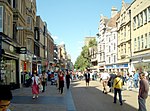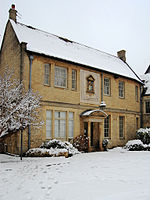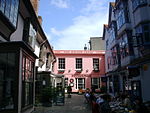Clarendon Shopping Centre
1984 establishments in EnglandCommercial buildings completed in 1984Shopping centres in OxfordShopping malls established in 1984

The Clarendon Centre (or Clarendon Shopping Centre) is a shopping centre in central Oxford, England, opened in 1984. The centre faces Cornmarket Street, and has other entrances onto Queen Street and Shoe Lane. The fascia onto Cornmarket Street is that of the Woolworths store which had, in a decision later criticised, replaced the Georgian Clarendon Hotel; it was discovered during demolition that medieval construction had been present within the hotel. The shopping centre was expanded in 2012–14. Major tenants include TK Maxx, H&M and Gap Outlet.
Excerpt from the Wikipedia article Clarendon Shopping Centre (License: CC BY-SA 3.0, Authors, Images).Clarendon Shopping Centre
Niebuhrstraße, Berlin Charlottenburg
Geographical coordinates (GPS) Address Nearby Places Show on map
Geographical coordinates (GPS)
| Latitude | Longitude |
|---|---|
| N 51.7525 ° | E -1.2586111111111 ° |
Address
Metahaus
Niebuhrstraße
10629 Berlin, Charlottenburg
Berlin, Deutschland
Open on Google Maps









